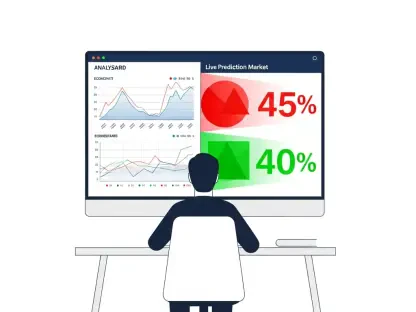As global financial markets evolve, the complexity of shareholder disclosure regulations is growing, driving the need for sophisticated automated systems. These rules are essential for maintaining market transparency and integrity, requiring investors to notify regulators about significant changes in holdings swiftly. However, the rapid pace of regulatory updates and varied jurisdictional interpretations present substantial challenges for firms worldwide. Automation, therefore, is increasingly recognized as a vital tool in managing compliance efficiently and fostering market transparency.
Current Landscape of Shareholder Disclosure
Growth and Adoption of Automated Systems
The global landscape has seen remarkable growth in the adoption of automated shareholder disclosure systems, driven by advances in technology and demands for quicker response times. Recent data indicates a significant increase in the deployment of these systems, as financial institutions seek to keep pace with evolving regulations. Reports from various financial and regulatory bodies underscore the growing reliance on automation, highlighting its role in enhancing data accuracy and ensuring timely compliance. Financial entities in the US and across Europe are particularly noted for their swift integration of these technologies.
Real-World Applications and Innovations
Numerous companies and financial institutions have effectively integrated automated systems into their shareholder disclosure processes, showcasing tangible benefits. For instance, certain banking institutions have reported increased efficiency and accuracy in meeting regulatory mandates through automation. Case studies highlight how automated solutions have streamlined the compliance workflow, reducing manual errors and operational costs. These innovations have not only bolstered compliance efforts but also improved transparency and investor relations.
Expert Opinions and Industry Insights
Industry experts frequently emphasize the transformative impact of automation on shareholder disclosure processes. Automation helps address challenges like integration complexities, regional regulatory discrepancies, and data accuracy maintenance. Notable voices in the financial sector argue that adaptive, data-driven tools are crucial in navigating the multifaceted regulatory environment. As regulations continue to evolve, automation enables organizations to develop proactive compliance strategies that can adapt to sudden regulatory shifts with ease.
Experts also highlight the role automation plays in shaping future compliance strategies. Organizations are encouraged to incorporate robust automated solutions to future-proof their operations against regulatory uncertainties. However, challenges remain, such as ensuring seamless integration with existing systems and overcoming the intricacies of differing regional regulatory frameworks.
Future Implications and Developments
Emerging trends in automated shareholder disclosure systems promise to reshape the industry significantly, bringing about numerous potential benefits. Enhanced transparency and reduced operational risks are among the anticipated outcomes of these advancements. Such trends include the increasing incorporation of artificial intelligence and machine learning to predict and adjust to upcoming regulatory changes dynamically.
However, challenges persist, including data security concerns and the ongoing evolution of regulations. As technology advances, the security of automated systems will need consistent reassessment to protect sensitive financial information. Further, the regulatory landscape’s fluid nature requires ongoing vigilance and adaptability from financial institutions, ensuring their systems remain compliant without compromising efficiency.
Conclusion
The progression toward automated shareholder disclosure systems represents a pivotal shift in financial compliance and transparency. These systems are equipped to navigate the intricate and evolving regulatory landscape, providing essential support for timely and accurate compliance. As automation continues to expand its reach within the financial sector, companies look for ways to mitigate operational risks while embracing improved efficiencies. Addressing challenges such as integration and security is fundamental, offering firms an opportunity to harness the full potential of these advancements, ultimately fostering a more transparent and resilient market environment.









